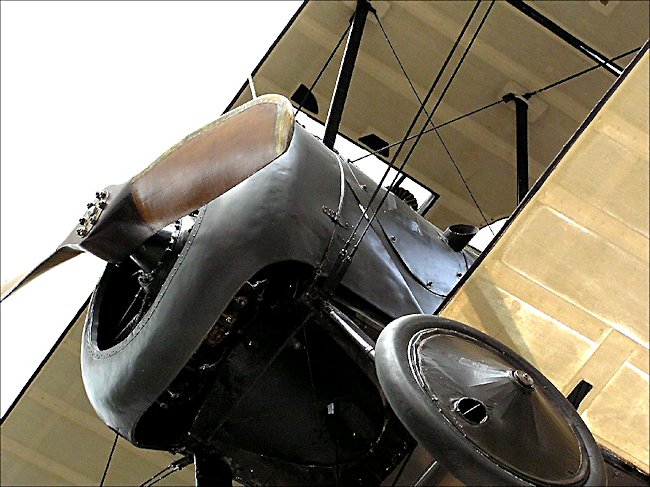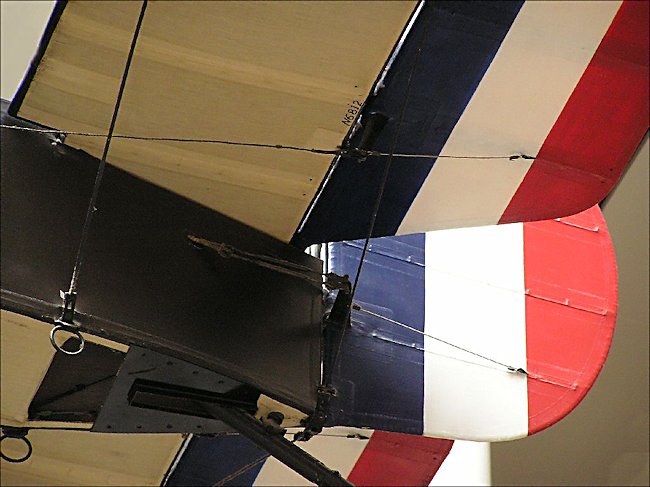Sopwith Camel WW1 Fighter Biplane
Sopwith Aviation Company was based in Kingston-upon-Thames south west of London. They already had produced a successful fighter the Sopwith Pup but new German fighters were now getting the better of the Pup so Sopwith set about designing a successor to the Sopwith Pup. Some called it the big pup. The design was not revolutionary but more evolutionary. It had a box-like fuselage structure, an aluminium engine cowling, plywood-covered panels around the cockpit, and fabric-covered fuselage, wings and tail. It is believed that 5,490 Sopwith Camels were constructed at different factory sites across the UK. The Sopwith Camel shot down 1,294 enemy aircraft during World War I, more than any other Allied fighter. F1 stood for fighter one
They came up with the famous Sopwith F.1 Camel. It would account for more allied victories than any other aircraft in World War I. The Sopwith Camel and Pup were not dissimilar in appearance, but that was where the similarity ended. The Pup was elegant and had docile handling.
The Sopwith Camel was, difficult and dangerous to fly wild stallion. In the hands of a novice pilot it was deadly. Many student pilots were killed while learning to fly the Camel. The Clerget engine was particularly sensitive to fuel mixture control, and incorrect settings often caused the engine to choke and cut out during takeoff. In level flight, the Camel was markedly tail-heavy. The pilot had to apply constant forward pressure on the control stick to maintain a level attitude at low altitude.

Photograph taken at the RAF Museum, Hendon, London NW9 5LL England
In the hands of a skilled pilot who could take advantage of its temperamental flying characteristics, it was a fantastic dog-fighter that could out manoeuvre every German fighter with the possible exception of the Fokker DR.-I triplane made famous by the pilots of Jagdgeschwader Nr. 1, the Richthofen 'Flying Circus'.
The reason it was problematic to fly was the very sensitive to flight control inputs, due to the placement of the engine, pilot, guns and fuel tank (90% of the weight of the plane) within the front seven feet of the aircraft as well as the torque effect of the rotary engine. This caused the plane to climb in a left turn and dive in a right turn, which if not corrected would result in a dangerous fatal spin. Once the pilot could handle these characteristics he could use them to good effect and make the Sopwith Camel a formidable hunting machine.
The Sopwith Camel had a wing span of 28ft and a length of 18ft 8 inches. Its height was 8 foot 6 inches. Depending on which engine the Sopwith Camel was fitted its maximum speed ranged from 104.5 mph to 113 mph at 10,000 ft and at 15,000 ft 97.5 mph to 108 mph. The service ceiling it could fly to again depended on the engine it was fitted with. It ranged from 18,000 feet to 21,500 feet.
e petrol pressure tank has a capacity of 138 liters and the gravity tank holds 32 liters. This gives sufficient fuel for a flight of about 3$ hours' duration. In order to provide a better view, a rectangular opening is cut in the centre section of the upper wing. The longitudinal edges of this opening are provided with three-ply plates projecting beyond the wing profile so as to reduce the amount of air flowing over the edges. To facilitate getting into and out of the machine the trailing edge of the centre-section has been cut away.

Photograph taken at the RAF Museum, Hendon, London NW9 5LL England
It was fitted with twin .303 inch Vickers guns as standard. These machine guns were synchronized to fire through the prop arc and the gun breeches were enclosed in a cowling which gave it the appearance of a hump and thereby gave the Camel its name. This was a first for British fighters and a design feature that became standard on British fighters for nearly 20 years. At the time it gave the camel upgraded firepower compared with previous British fighters. Balloon Buster Camels carried one upward firing Lewis machine Gun. Camels fitted with eight Le Prieur air-to-air rockets proved to be very effective against German Zeppelins and long-range bombers.
Some Ground attack Sopwith Camels had racks for four 25-pound bombs installed under the centre fuselage. These Camels were used for ground-attack operations during the battles of Passchendaele and Cambrai. After suffering heavy losses due to ground fire this strategy was abandoned.

Photograph taken at the RAF Museum, Hendon, London NW9 5LL England
The Sopwith Camel performed better than the Sopwith Triplane and Pup in the hands of an experienced pilot. The Camel turned rather slowly to the left, which resulted in a nose up attitude due to the torque of the rotary engine. But the engine torque also resulted in the ability to turn to the right in half the time of other fighters,]although that resulted in more of a tendency towards a nose down attitude from the turn. Because of its agility in combat, together with the SE5a the allied air forces started to regain superiority as they could now take on the German Albatros fighters.
No. 4 Squadron of the Royal Naval Air Service, stationed near Dunkirk were the first unit to be supplied with the new Sopwith Camel biplane fighter. They entered squadron service in June 1917. By the end of July 1917 Royal Flying Corps No. 70 squadron and by the end of the year the No. 6 RNAS was completely equipped with Sopwith Camels. !3 Squadrons were fully equipped with camels by February 1918. The American Expeditionary Force purchased 143 Camels, but they were fitted with the less dependable Gnome Monosoupape engines
The Royal Navy version of the Camel was the 2F.1 which had a slightly smaller wing span. By the end of 1917 a total of 1,325 Camels delivered. They were fitted with an over wing Lewis gun. Camels served on five aircraft carriers, two battleships and twenty-six cruisers. You can see a Sopwith 2F1 Camel naval variant, in the Imperial War Museum, London. It was flown by Flight Sub Lieutenant Stuart Culley who was famouse for shooting down Zeppelin L 53. There are only six other authentic Sopwith Camels left in the world. They can bee seen at Aerospace Education Center in Little Rock, Arkansas, Brussels Air Museum Restoration Society (BAMRS) in Brussels, Belgium, Polish Aviation Museum, Krakow (fuselage and central wing section only) the Canadian Aviation Museum, Ottawa/Rockcliffe Airport, Ontario and the the Royal Air Force Museum, Hendon, London

Photograph taken at the RAF Museum, Hendon, London NW9 5LL England
Canadian pilot major Alexander MacDonald Shook RNAS was the first to score a victory flying a Sopwith camel when he shot down an Albatros D.III on 4th June 1917. He shoot down another Albatros D.II and five Albatros D.V.'s plus a Gotha G in a Sopwith Camel.
Canadian Major William Barker's 28 Squadron Sopwith Camel (serial no. B6313, the aircraft in which the majority of his victories were scored) became the most successful fighter aircraft in the history of the RAF, shooting down 46 aircraft and balloons from September 1917 to September 1918 in 404 operational hours flying. He prefered the Sopwith camel over the SE5 he flew in 56 Squadron. The unit moved to France on 8 October 1917, and downed an Albatos DV on his first patrol, though Barker did not claim it as the patrol was unofficial. He claimed an Albatros of Jasta 2 (Lt. Lange, killed) on 20 October, and two more, of Jasta 18, on 27 October (Lt. Schober killed, Offstv. Klein, force landed). The squadron moved to Italy in November. On 29 November he downed an Austrian Albatros D.III flown by Lt Haertl of Jasta 1 near Pieve di Soligo. A Jasta 39 pilot was shot down and killed and a balloon of BK 10 destroyed on 3 December. One of his most successful, and also most controversial raids, fictionalized by Ernest Hemingway in the short story, The Snows of Kilimanjaro, was on 25 December 1917. Catching the Germans off guard, he and Lt. Harold Hudson, his wingman, shot up the airfield of Fliegerabteilung (A) 204, setting fire to one hangar and damaging four German aircraft before dropping a placard wishing their opponents a "Happy Christmas".

Photograph taken at the RAF Museum, Hendon, London NW9 5LL England
Lt Lang of Jasta 1 was killed by Barker on 1 January 1918, and two balloons, two Albatros fighters (one flown by Feldwebel Semelock of Flik 51J) and a pair of two-seaters fell to Barker during February. Awarded the DSO, in March he claimed three more Albatros and an observation balloon. Owing to his tendency to ignore orders by flying many unofficial patrols, Barker was passed over as when the post of Commanding Officer of No. 28 Squadron became vacant. Dissatisfied, he applied for a posting and joined No. 66 Squadron in April 1918. On 17 April he shot down Oblt. Gassner-Norden of Flik 41J, flying an Albatros D.III (Oef), over Vittorio. Major William Barker claimed a further 16 kills by mid-July. He was later awarded the Victoria cross.
Lieut. (A./Capt.) Donald Roderick MacLaren, M.C., D.F.C., DSO flying a Sopwith camel managed to down six kite observation balloons and 48 German fighters including a Fokker DR.I, Albatros D.V, Pfalz D.III, LVG C, DFW C, Halberstadt C, Junkers J.I. and a Hannover C. Royal Naval Air Service, William Lancelot Jordan between 13th July 1917 and 12 August 1918 shot down 39 enemy aircraft in his Sopwith Camel including Fokker DR.I, Albatros D.V, Pfalz D.III, LVG C, DFW C, Rumpler C and a Hannover C. Lt. (T./Capt.) John Gilmour, D.S.O., M.C., A. and S. Highrs. and R.A.F. shot down 36 enemy aircraft in his Sopwith Camel including Fokker DR.I, Albatros D.V, Pfalz D.III, and a Rumpler C

Photograph taken at the RAF Museum, Hendon, London NW9 5LL England
By mid-1918 the Camel was becoming limited by its slow speed and comparatively poor performance at altitudes over 12,000 ft (3,650 m). However, it was then used as a ground-attack and infantry support aircraft. During the German offensive of March 1918, flights of Camels harassed the advancing German Army, inflicting high losses (and suffering high losses in turn) through the dropping of 25 lb (11 kg) Cooper bombs and ultra-low-level strafing. The protracted development of the Camel's replacement, the Sopwith Snipe, meant that the Camel remained in service until the Armistice.
Fifteen years after the creation of Charles Schulz's comic strip "Peanuts," Snoopy's doghouse transformed into a Sopwith Camel British WW1 fighter. as his alter-ego Snoopy the World War I Flying Ace soared onto the comic scene in 1965. Snoopy's fantasy appeared in 400 strips over 34 years in which he imagined he was battling against the Red Baron.
W.E. Johns was a First World War pilot. He became the author of the highly successful Biggles series of adventure books. The main character was pilot and adventurer James Bigglesworth, Biggles to his friends. The first three books are very different to the rest. They are more gritty and realistic. They tell the story of a young Biggles who has just joined the RFC at the age of 17 in 1916 to fight the Hun. It is obvious that the author has used his experiences and the accounts of other WW1 pilots to add reality to the narrative. These books are called The Camels Are Coming, The Cruise of the Condor. And Biggles of the Camel Squadron. Biggles flew Sopwith Camel biplane fighters. In the stories featuring his World War I exploits, he claimed at least 32 kills, and was shot down or crash-landed eight times. A quote from the film version of Biggles, "If you can fly a Sopwith Camel, you can fly anything."
Sopwith Camel books


Tweet